Lessons from the Block Shelves
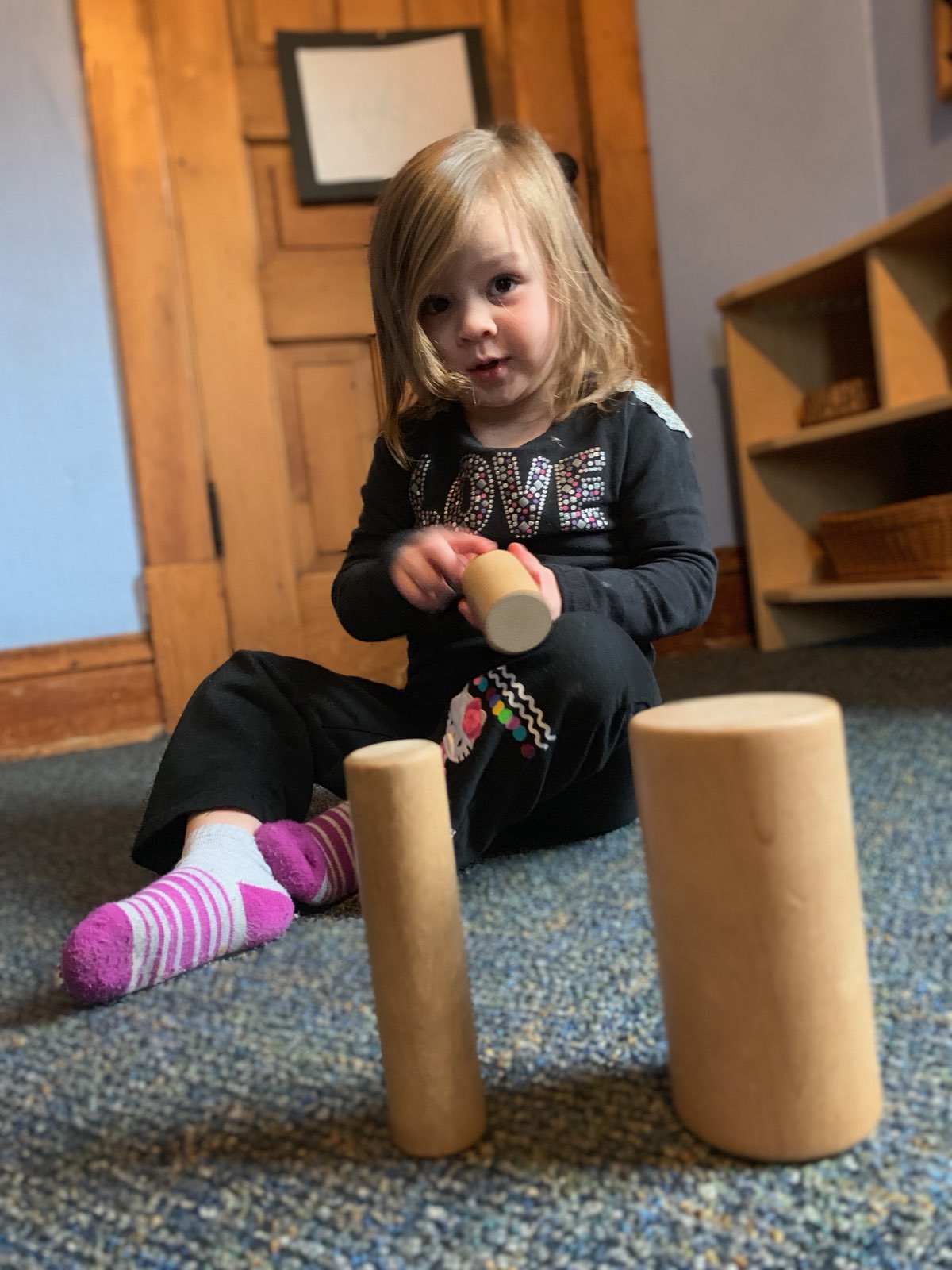
Earlier this month, we talked about the math explosion that took place during our block play. I shared the delight of capturing a play buzz to knock out early learning standards through play. To my astonishment, our play buzz continued all the way through our pickup activities and, let me just say, that never happens! We usually have one older “organizer” who likes to put the unit blocks in their specific spaces, but the younger children struggle just to find any shelf in the room that will work. So, when I saw the empty shelves actually being organized in order, I took note.
“Here’s a circle!” calls out two-year-old Eleanor. “That goes here. My mom calls this a cylinder,” says four-year-old Noah. “A silly-der?” asks a confused two-year-old. “No, a cylinder!” A burst of giggles is followed by the two-year-old trying again and again and again—to the hysterical delight of her friends. Finally, the play moment is over and the two-year-old impresses the group by naming the block correctly: “Your mom calls this a cylinder!” Applause and dancing ensue. During this rare but engaging pick-up period, we have all the elements needed to build the brain. We have movement. We have physical touch. We have mentoring and experimenting. When we fail, there is not a meltdown in sight, because there is always a friend nearby to show us the correct solution. We have conversations, rationalizing, cooperation, observation, design and data collection, as well as sorting, grouping and problem-solving. We have hit the nirvana of meeting learning standards with hands-on learning and communicating!
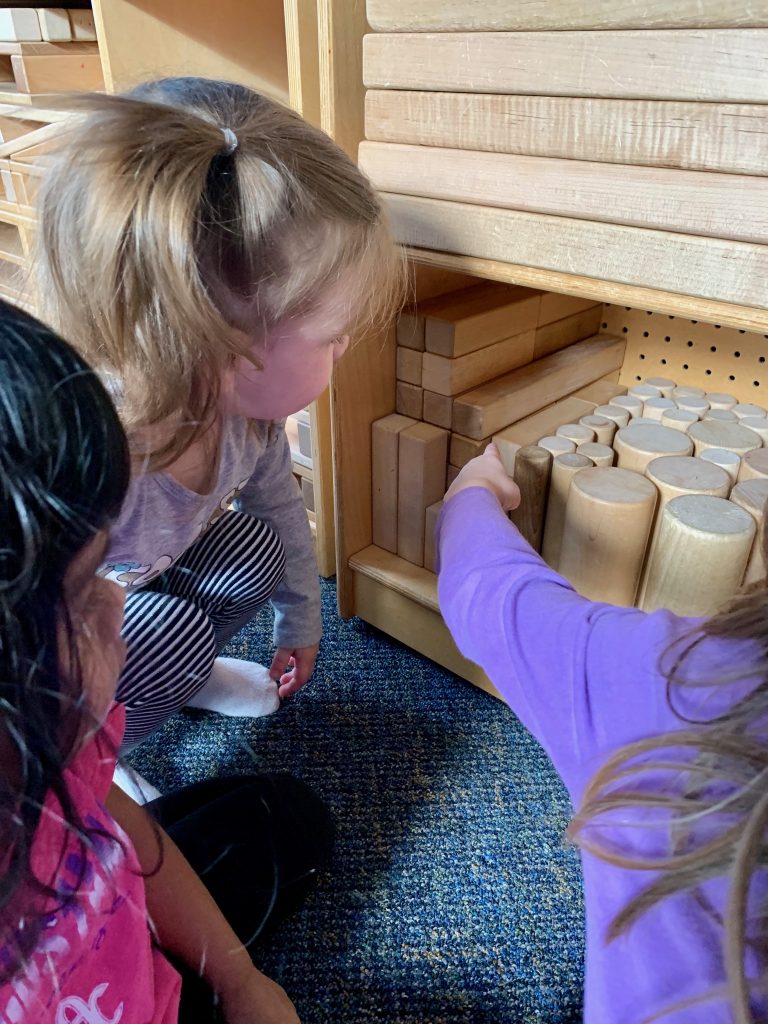
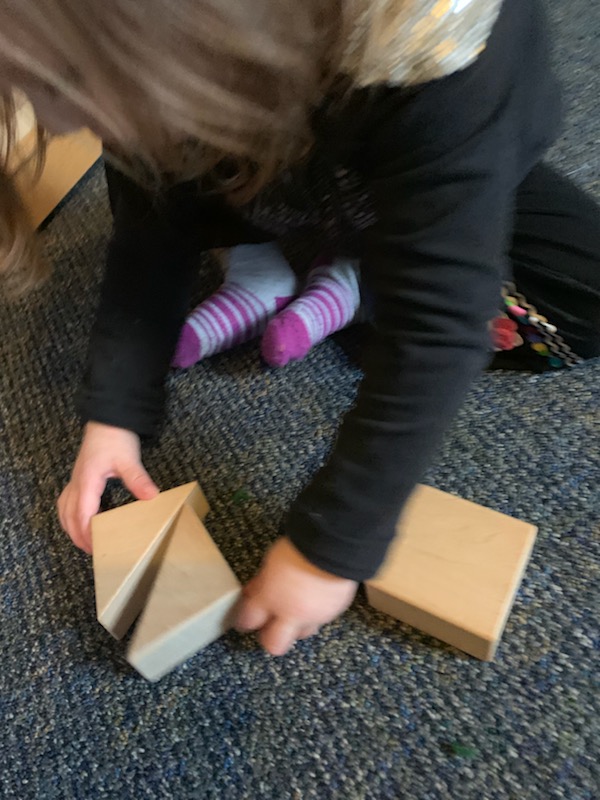
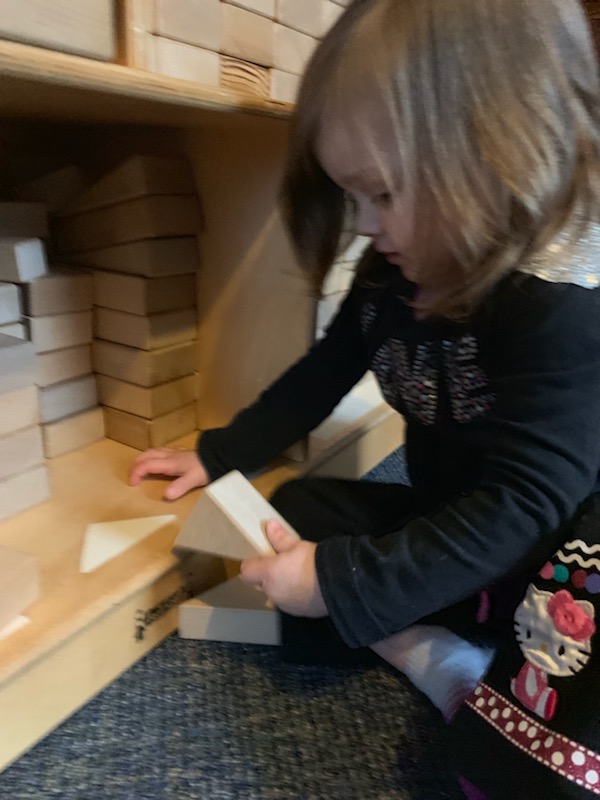
By turning a block in a different direction, it completely changes how it fits on the shelf. I watch the little wheels turning in Saaliha’s head. It’s deep thinking, she is silent, she tries different ways, she puts the block down only to pick it back up to try again. She sees another friend place a block in effortlessly. She turns her block in the same direction and tries again. Success! There is no celebration. There is a search for another matching block to cement this learning in her brain.
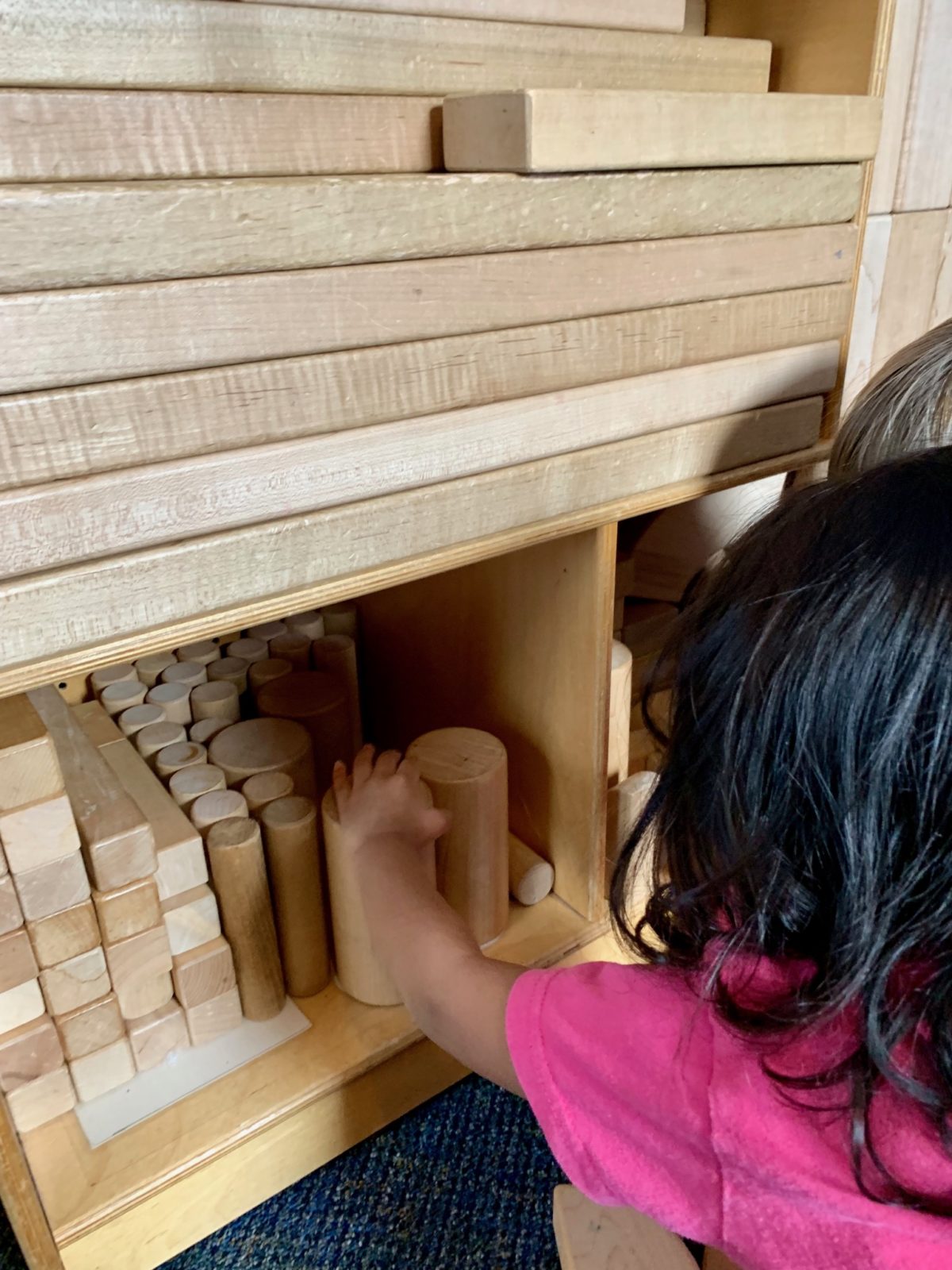
Early Learning Standard 9.A.ECe gets checked off the list! I am not convinced that Saaliha’s brain was ready for this on paper. The brain may not have been able to see it on a worksheet. When we put the objects in their hands and the vocabulary in their world, the pieces of the puzzle can make their way into the brain. Make the learning real!
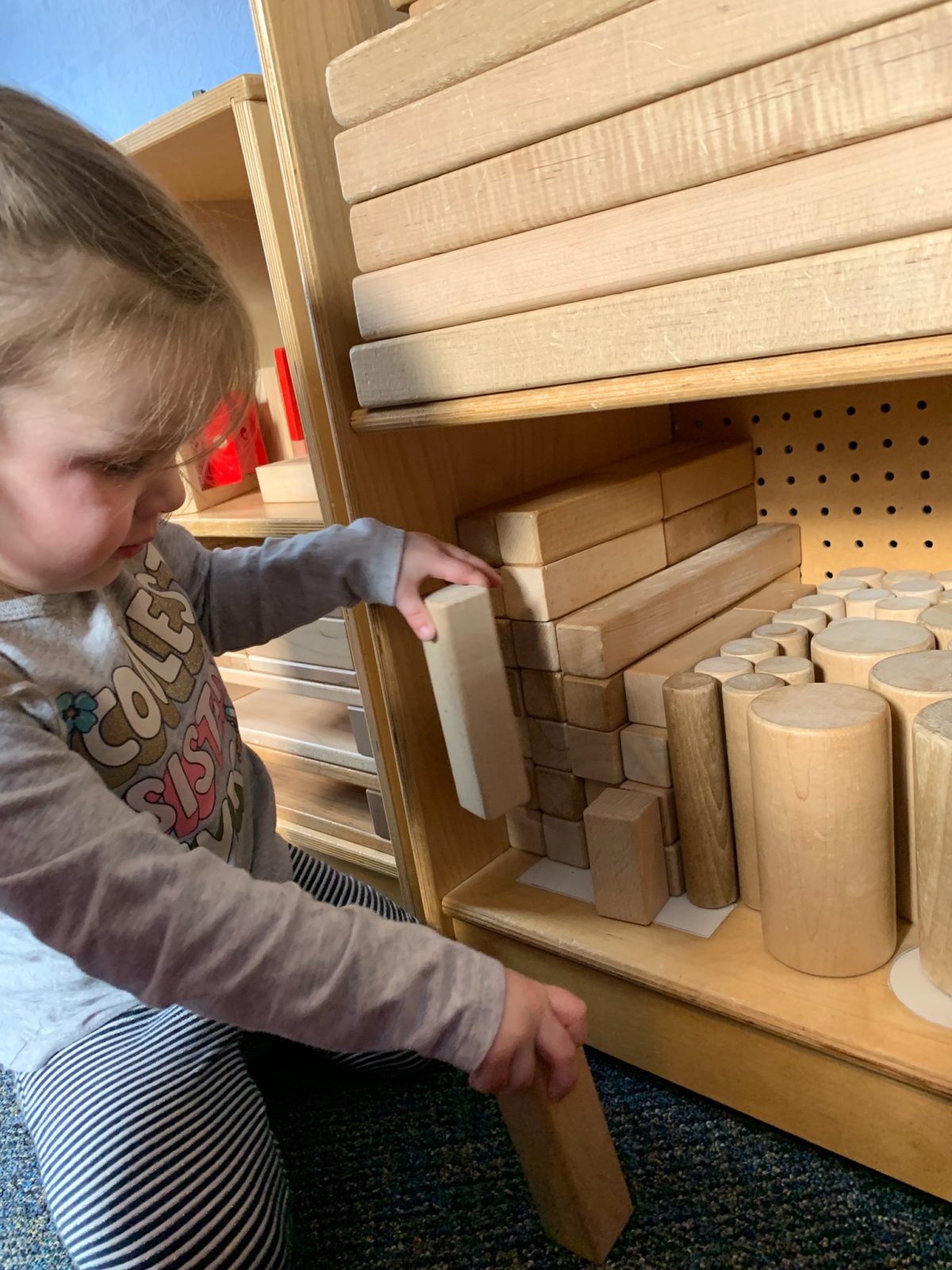
As educators, we are so often running around putting out fires, that the documentation is a struggle. Play buzzes give us that time to stand back and actually observe the learning that is happening in front of us. This is a great time to just put your phone or camera on video. Target the group or the individual child you need data on. When we are indoors, the majority of our play buzz moments will come in that block room. Blocks are always developmentally correct for the child who is interacting with them. If your program doesn’t have a block area, try to make it happen. It will enrich the lives of everyone in the room. If you have a block area, carve out a nice LONG period of time to get down on the floor and start the play buzz. I promise you, your assessment will be met.
Good to learn about patterns and shapes and numbers is good for the children to learn at age level and the videos were very helpful an instructor explained it well
Learning about how children can learn at any age is amazing children learn how to count do patterns do pattern ruler do a pattern sequence pattern number it’s good to know we hav many patterns children can learn from
I learned about vocabulary how children can learn through books through Storys through the teacher talkin vocabulary is very important to young children and even school-age children as they learn.
Teaching toddlers gives me a more insight on how well the children are doing n evening taught.
Children and math is something every child would hav 2 Learning from baby stage to adults.
I learned about vocabulary how children can learn through books through Storys through the teacher talkin vocabulary is very important to young children and even school-age children as they learn.
Teaching children about environment can be fun in the way you bring it out I learned that children can learn and many different ways of math and preschool and toddlers can also learn as it is being tauhgt.
Blocks are an amazing tool for toddlers and preschoolers and work for math attributes. Math is important any age.
I agree that blocks are an amazing learning tool in so many different ways. I like the idea of having pictures of block shapes to label the storage so children are learning even when cleaning up!
fascinating
Sorting and organizing blocks is one of my kiddos favorite things to do! They do it and do not even realize that they are learning since they are playing in their opinion!
Block play is a phenomenal way to learn spatial reasoning and to “listen in” on what children actually know and can verbalize about shapes and the space they occupy.
It’s always fun to see how children turn the block area into a sea of learning. I love that just the process of clean up has spurred so many different learning topics.
Knowing that the children were excited when talking about shapes warms my heart!
So many different aspects of math can be found in the block center. It is amazing to watch the children learning and exploring. I really appreciate the the fact pointed out that the child may not have recognized the connection in a pencil and paper task. Play is learning!
Block play is a favorite in my classroom. I have seen older toddlers (almost 3 years old) balancing different shapes, problem solving when one type of shape doesn’t balance on another. I see them get excited about how tall it gets and counting how many blocks they used. There is so much math in block play!
I can’t wait to try to get my blocks to look like those in the video
Love how the child were able to figure out how two triangle blocks put together make a square!
Yes, I agree, children can be very creative in the block area and a lot of learning areas can be met in that one area alone. It is amazing.
As an adult it is often hard to grasp that young children will learn through real objects, able to process that data, and with assistance be able to interpret the data collected.
Sorting with blocks is a great way to teach analysis to children it also helps them when it comes to putting the blocks away when it is time to clean up
Love the block area so many ways to learn!
A great way to share natural play based learning opportunities and observations with children and their families.
While doing this activity, you can add vocabulary words such as cube and cylinder to enhance the lesson.
I love how something as simple as playing with blocks is actually very complex! It is a great tool for teaching spatial concepts!
great idea
I like how the children talk about the shapes, and then figure out how you can change some shapes to form another shape altogether. Pretty cool of the kids.
Block play is such a popular activity for my students. They can create and also discuss shapes at the same tie
During this activity you can use rich vocabulary and expand language. Also this is a great way to learn shapes and patterns.
I really like the different ideas given to the teachers to make the learning environment fun.
labeling the block shelf with the shape pattern helps the children learn and match shapes by size. They can also practice counting each group of shapes.
I really enjoyed the rich vocabulary, examples, and show of standards that learning shapes through block play promotes.
Having shelves of various shapes of blocks and having them sorted is a great way for young children to see how many different shapes there are. Also, at the same time the children can learn how to sort and store the various blocks in their appropriate shelf. This is a useful technique so that children can learn how to categorize toys.
I love that the shelves had a picture of the block types but the space was available for them to work out fitting them onto the shelves. Thanks for sharing your observations!
blocks of all different are great learning tools for the children. There is so much you can do with them.
Math is so important in preschool years. Graphing/labeling/sorting all add to that knowledge. Using common objects makes sense to them and blocks can be used in so many ways. Items they can touch, feel, move around allows for more in depth understanding.
Blocks are great in every classroom. Older kids like to figure out how many of a certain block they need to build forts with.
Seeing all the different ways that blocks can be utilized in learning early math is so interesting and makes me want to bring them out more often.
Block play is great for so many categories. I love sitting back to see what level each child is at. You can always add a question for them to build on.
Block play is so wonderful. I love watching the students use their imaginations to build, and then also sort them into different categories when using them and then reorganizing them or putting them away. Also so interesting to see the different age levels use them differently.
The shelves organized by size, shape, etc. are awesome.
It is a moment of joy when the children begin to work together, and enjoy the attributes of the data that they are collecting. It hits the chart that a teacher lives to see.
Ah,Shirley! You summed that up so beautifully! This is what keeps us in the classroom, on those very hard days! It’s a thing of beauty! Thanks for sharing your thoughts with all of us! I loved it!
using blocks is an excellent resource. We have several different sets that can be used in different ways. The children like to play with them, so they are easy to relate to.